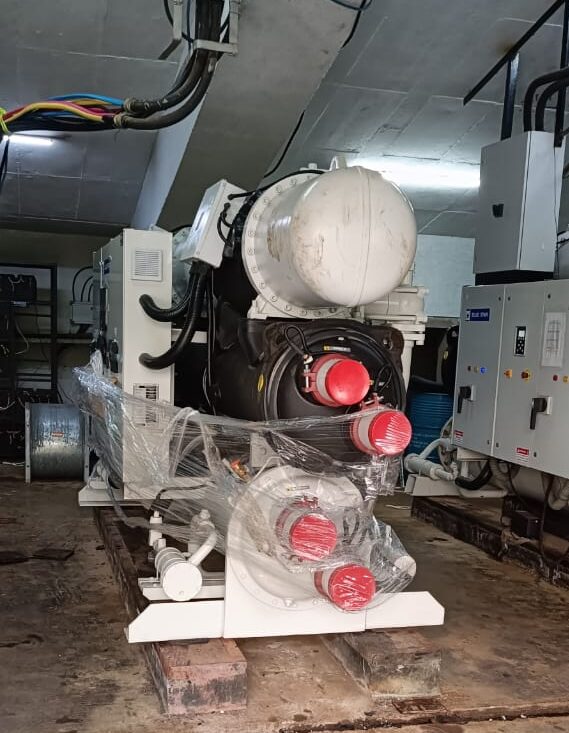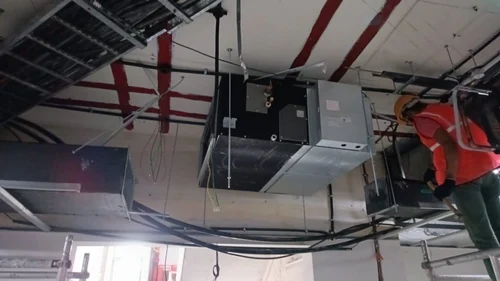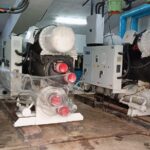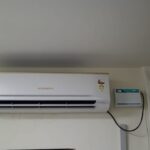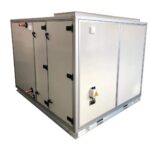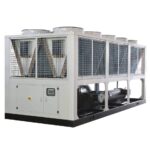HVAC (Heating, Ventilation, and Air Conditioning) system design plays a critical role in ensuring comfortable, safe, and energy-efficient environments in residential, commercial, and industrial buildings. A well-designed HVAC system not only provides optimal indoor air quality and temperature control but also minimizes energy consumption and operational costs. Here’s a detailed overview of the key components, considerations, and best practices involved in HVAC system design.
Key Components of an HVAC System:
Heating System:
- Furnace/Boiler: Heats air or water and distributes it through ducts or radiators.
- Heat Pump: Extracts heat from outside air or ground and transfers it inside.
- Radiant Heating: Uses infrared radiation to heat floors or walls directly.
- Heaters: Space heaters or baseboard heaters provide localized heating.
Ventilation System:
- Mechanical Ventilation: Uses fans or blowers to circulate air and remove stale indoor air, replacing it with fresh air.
- Natural Ventilation: Utilizes natural airflow through windows, vents, or chimneys to ventilate indoor spaces.
- Exhaust Systems: Used in kitchens, bathrooms, or industrial environments to remove contaminants and improve air quality.
Air Conditioning System:
- Central Air Conditioners: Use refrigerant to cool and dehumidify the air before distributing it through a duct system.
- Split AC Systems: Include an indoor evaporator unit and an outdoor compressor unit, often used in smaller or zone-controlled spaces.
- Packaged Units: All-in-one systems containing heating and cooling components, often used for rooftop installations in commercial buildings.
- Chillers: Commonly used in large industrial or commercial spaces, chillers cool water that is distributed to air handlers for cooling.
Control Systems:
- Thermostats: Regulate the system’s heating and cooling settings based on the desired indoor temperature.
- Building Management Systems (BMS): Advanced control systems used in large commercial buildings to monitor, control, and optimize HVAC performance.
HVAC (Heating, Ventilation, and Air Conditioning) equipment supply and installation is a crucial step in ensuring that your space—whether residential, commercial, or industrial—maintains optimal comfort and energy efficiency. A well-executed supply and installation process helps to ensure the longevity of your HVAC system, reduce energy consumption, and improve indoor air quality. Here’s everything you need to know about HVAC equipment supply and installation.
Key Components of HVAC Systems:
Heating Equipment:
- Furnaces: Provide heating through air ducts and are powered by natural gas, electricity, or oil.
- Boilers: Use water or steam to heat buildings, often powered by natural gas or electricity.
- Heat Pumps: Efficient systems that transfer heat between indoor and outdoor spaces for both heating and cooling.
Cooling Equipment:
- Air Conditioners (Split Systems): Consist of an outdoor compressor unit and indoor evaporator coils to cool the air.
- Packaged HVAC Units: Contain both heating and cooling components in one unit, typically installed on rooftops for commercial buildings.
- Chillers: Used for cooling water, which is then circulated to provide air conditioning in larger industrial or commercial spaces.
Ventilation Equipment:
- Air Handlers: Distribute air throughout the building and are usually combined with duct systems.
- Exhaust Fans: Remove stale or contaminated air from spaces like kitchens, bathrooms, or industrial settings.
- Ventilation Ducts: Channels through which air is distributed throughout a building, playing a crucial role in maintaining air quality and temperature.
Thermostats & Control Systems:
- Manual and Programmable Thermostats: Allow users to adjust and set temperature controls for the HVAC system.
- Smart Thermostats: Connected devices that enable remote monitoring and control of HVAC systems via smartphones or building management systems (BMS).
HVAC (Heating, Ventilation, and Air Conditioning) system commissioning is a critical process that ensures the HVAC system is installed and operates as intended, delivering optimal performance, energy efficiency, and occupant comfort. Commissioning involves a series of checks, tests, and adjustments to verify that the system meets the design specifications and operates correctly under all conditions. Here’s a detailed look at the importance of HVAC commissioning, the steps involved, and the benefits it offers.
What is HVAC System Commissioning?
HVAC commissioning is the process of verifying that all components of an HVAC system—from the equipment and controls to the ducts and thermostats—are properly installed, calibrated, and functioning according to the design intent and operational requirements. This process typically involves testing the performance of heating, cooling, ventilation, and control systems to ensure they meet energy efficiency goals, comfort requirements, and safety standards.
Commissioning is especially important for complex systems in commercial buildings, but it is beneficial for residential installations as well.
Why is HVAC Commissioning Important?
Ensures Optimal Performance: Commissioning ensures that all HVAC components work together as a system, optimizing airflow, temperature control, and overall energy efficiency.
Reduces Energy Consumption: Proper commissioning can identify and resolve issues such as poor calibration, incorrect refrigerant levels, or leaky ducts that may cause energy waste, leading to higher utility bills.
Prevents System Failures: Catching installation errors or equipment faults early in the commissioning process can prevent costly breakdowns and repairs later on.
Improves Indoor Air Quality (IAQ): Verifying ventilation and filtration systems helps maintain high indoor air quality by ensuring that fresh air is adequately circulated and contaminants are properly filtered out.
Compliance with Codes and Standards: Commissioning ensures that the HVAC system complies with building codes, safety regulations, and industry standards such as those set by ASHRAE (American Society of Heating, Refrigerating, and Air-Conditioning Engineers).
Enhanced Comfort for Occupants: Properly commissioned systems regulate temperature, humidity, and ventilation more accurately, improving comfort levels for building occupants.
Proper HVAC (Heating, Ventilation, and Air Conditioning) system maintenance is essential to ensuring that your system runs efficiently, minimizes energy consumption, and provides a comfortable indoor environment. Regular maintenance not only extends the lifespan of your HVAC equipment but also helps prevent costly breakdowns, reduces energy bills, and improves indoor air quality (IAQ). Here’s a comprehensive guide to maintaining your HVAC system effectively.
Why HVAC System Maintenance is Important:
Increased Energy Efficiency: Regular maintenance helps your system run at peak efficiency, reducing energy consumption and lowering your utility bills.
Extended Equipment Life: By addressing minor issues early, routine maintenance can significantly extend the life of your HVAC equipment, delaying the need for costly replacements.
Prevents Unexpected Breakdowns: Regular inspections and tune-ups reduce the risk of sudden breakdowns, which can be expensive and inconvenient, especially during peak heating or cooling seasons.
Improves Indoor Air Quality: Cleaning and replacing air filters, checking ductwork, and ensuring proper ventilation prevent dust, allergens, and other pollutants from circulating in your home or office.
Compliance with Warranties: Many HVAC manufacturers require regular maintenance as part of their warranty terms. Neglecting maintenance could void your warranty, leaving you responsible for repairs.


